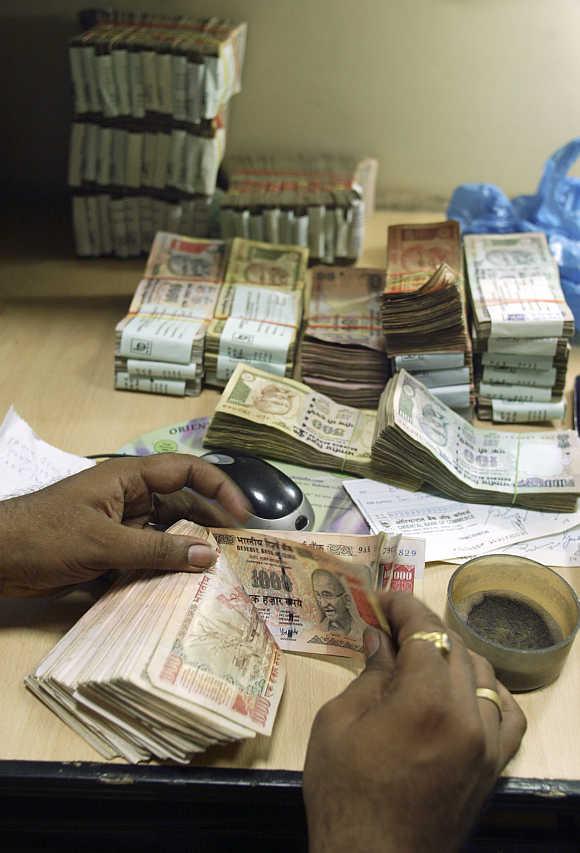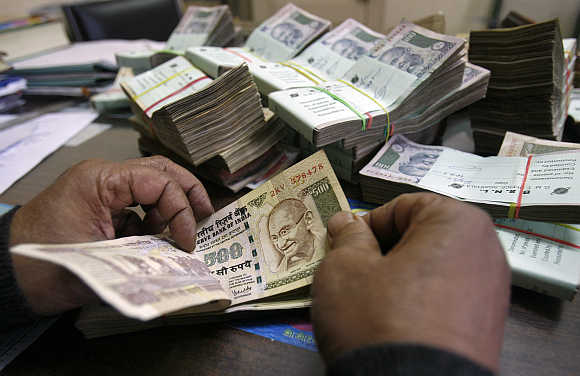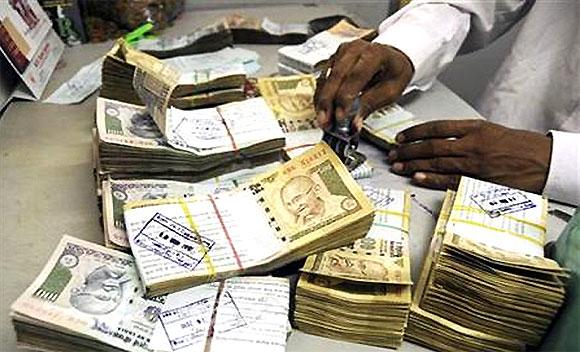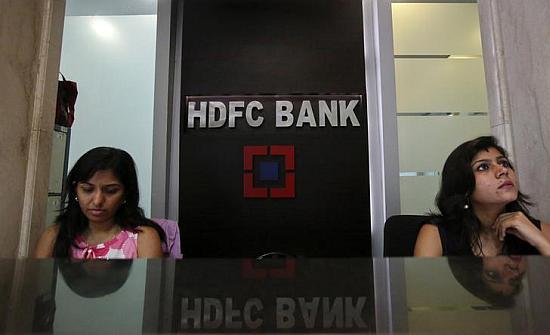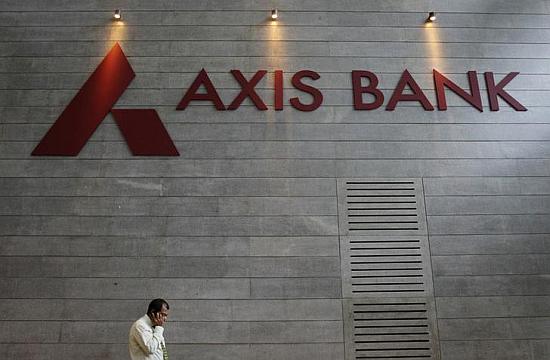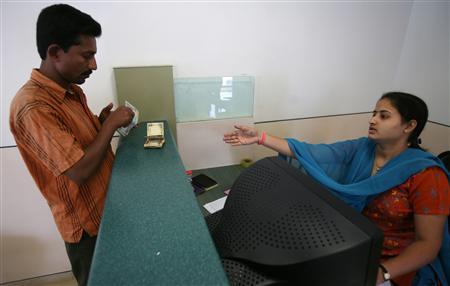 | « Back to article | Print this article |
The real trouble with our banks
Once upon a time, that is, in March 2013, banking stocks used to be a “must own” in every domestic and foreign institutional investor portfolio. Any dissenting view (expressed by us, for instance, in a research note dated April 4, 2013) was met with general ridicule.
Four months later. . . anybody owning Indian bank stocks is being talked of as a liability to his/her fund house.
Banks stocks have collapsed between 25 and 60 per cent since March this year, and they still look wobbly.
So what explains this collapse?
Deep macro analysis of Indian banking reveals a rather counter-intuitive reason.
Click NEXT to read further. . .
The real trouble with our banks
And that reason is that our banks are too profitable.
Before we analyse banking, first let’s look at telecom.
We have always regarded telecom to be a perfect commodity business.
Get a licence, outsource the towers and the customer service.
Be a virtual company only engaged in the business of customer acquisition.
This is done through aggressive marketing, and so on.
If you can hoard some spectrum, as was done by some players in the first half of 2000s, then even better.
Nearly all companies engaged in the business can end up doing pretty much what everybody else does.
Capital availability is about the only differentiator in the business, but if margins are high enough, this doesn’t remain a constraint.
Click NEXT to read further. . .
The real trouble with our banks
This is precisely the problem telecoms had in 2007, when we turned bearish on the sector.
Bharti was making 42 per cent earnings before interest, taxes, depreciation and amortisation margins, 27 per cent return on equity. . . for doing, frankly, nothing very special. In a perfectly competitive country like India, margins like that attract new players with new capital.
Unlike the US, where there are a number of factors that limit the movement of companies from one sector to another (largely anti-competitive measures), India suffers from no such problem.
Corporate India moves easily and en masse into businesses where they see some average company make super-normal margins.
That’s what happened in telecom in 2008, and we now know how the sector’s margins and RoEs went into a free-fall.
Commodity businesses sporting artificially high margins never last too long in India.
Click NEXT to read further. . .
The real trouble with our banks
Banking is the ultimate commodity business, even more than telecom.
A depositor has little interest in a bank’s brand value.
As long as, broadly, a bank meets the sniff test of safety, a depositor will shop around for the best rates on his deposits.
On the borrowing side, it’s even worse: a borrower cares even less about his lending bank’s brand value.
He is merely interested in getting the lowest rates and the fastest approvals for his loan. Opening a bank branch is easy.
There are no great complexities of technology or logistics required.
Each bank can easily duplicate what the next bank is doing. There is near-zero product differentiation.
Click NEXT to read further. . .
The real trouble with our banks
But looking at the profits Indian banks have been making, you could be pardoned for thinking that this is the most skilled, brand-driven, large-moats-around-its-business kind of enterprise.
These are profits of some our major banks: (we have used a dollar/rupee rate of $45 to erase the effect of the rupee’s steep fall, in order to make our banks’ numbers consistent with global banks’): HDFC Bank makes a profit
of $1.8 billion, ICICI $1.8 billion, Axis Bank $1.2 billion, Kotak Bank $500 million and YES Bank $300 million.
Now, look at some global banks’ profits: HSBC, inarguably the world’s most globalised bank in the world, makes a profit of $14 billion, Bank of America makes a profit $4.5 billion, BNP Paribas makes $6 billion, Banco Santander makes $2.2 billion and Credit Suisse makes $1.3 billion.
Click NEXT to read further. . .
The real trouble with our banks
Many of these banks have footprints that span the world.
Contrast this with our Indian banks.
They are 100 per cent single-country focused, that too, a very poor country with low paying capacity for banking services and products.
And even within India, they are still very urban-centric, and with none of them capable of being called truly pan-Indian operations.
And yet, their profits are simply massive, even when compared to their global peers.
The perspective becomes even more refined and stark when you compare our banks to other, old-line, decades-old companies.
Godrej Consumer, born in 1897, makes a profit of $180 million.
Hindustan Unilever Ltd makes a profit of $850 million, again after 100-plus years in India.
Click NEXT to read further. . .
The real trouble with our banks
Nestle makes $240 million, Dabur $300 million, ITC $1.8 billion, Bajaj Auto $650 million.
All these companies have marquee, iconic brands, have been around for decades, have distribution reaching down to the smallest villages in India, have business models that are impossible for a new entrant to replicate in any meaningful way.
And yet, their profit numbers are nothing when compared to our banks who have been around less than 20 years, and most, less than 10 years in any substantial way (Kotak, YES).
Think about this: in just five to seven years’ time YES Bank has built up profits of $300 million-plus, more than what a storied company like Nestle makes even after decades in India.
Now, one could have understood if YES Bank was doing something very special or unreplicable by anybody else, that it had some crucial proprietary edge in the business that led it to such massive profits.
But it has nothing of that sort. It is still plain banking, like every other private sector bank.
Click NEXT to read further. . .
The real trouble with our banks
The same goes for the rest, like Kotak or ING Vysya, all of which make profits far in excess of what is rationally achievable in what is a vanilla, commodity business, with no moats around it.
Even if these banks were making their money from principal trading, these numbers may have been justifiable, because trading requires very special skills, and hence, there are no practical limits on how much money a bank can make in this activity.
But to make this global level of profits for doing age-old borrowing + lending + some treasury operations seems completely unsustainable.
Super-normal profits are the result of doing something better than what anybody else can.
Facebook, a very young company can make $1 billion in profit (far less than HDFC Bank, we may point out) because you simply can’t create another Facebook that easily. But can you create another HDFC Bank?
Click NEXT to read further. . .
The real trouble with our banks
Well, If YES Bank can, in just five short years, reach one-sixteenth its size and Kotak can reach one-fourth its size, this business can’t be that difficult, can it? If this business is not that difficult, then how can these gargantuan profits last?
The truth is that Indian banking suffers from too little competition at the quality end, leading to these profits.
Just as call rates crashed in telecom, leading to greater common good in society, thanks to A Raja’s telecom perestroika, a slew of new bank licences should be issued that will hopefully lead to the whittling down of these unjustified, sky-high profit numbers of the existing players, thereby making banking services more affordable for the masses.
It doesn’t require any recondite analysis to see where Indian banks’ profit are headed… or for that matter, their stocks.
It’s time to sound the tocsin on Indian banking.
Shankar Sharma & Devina Mehra head First Global
